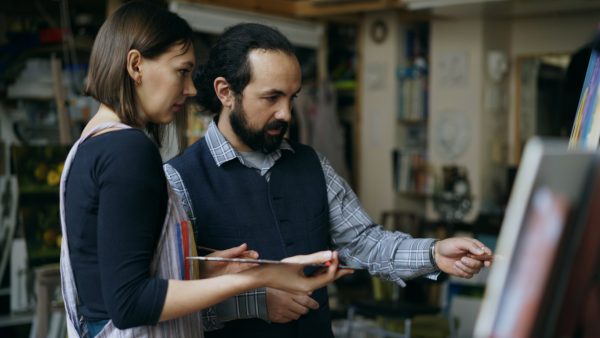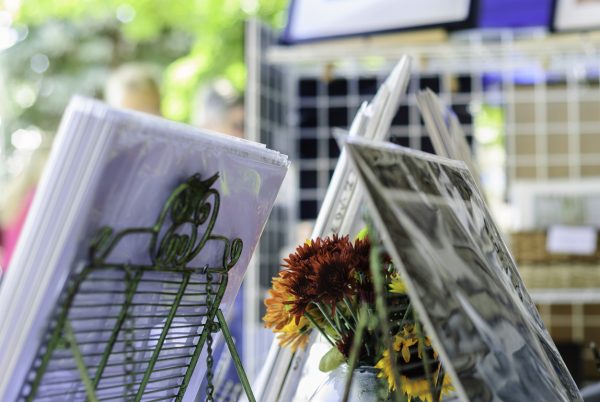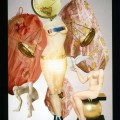It can be very easy, as an aspirant or current artist, to see the broader art world as arcane and impenetrable, in which those who possess the ‘gift of the gab’ all too often triumph over those with the most credible and interesting portfolio of work.

Whether we like it or not, however, success as a professional artist depends hugely on being able to build the right relationships. If you want to start building up a formidable and usable contacts list as an artist, here are some great ‘starter tips’.
Do your research and be well-read
Burying your nose in a traditional printed publication like an art magazine or newspaper, or indeed perusing the latest blog posts, forum discussions and other online resources like ArtWeb, may not appear to have much to do with networking, but they can actually be rich mines of information on potential contacts.
Who wrote that article? What gallery is that featured artist represented by? What art fairs, exhibitions and events has that artist had a presence at during the last 12 months, and who else are they associated with? When building up an artistic contacts list, knowledge really is power.
Don’t underestimate your existing contacts
There may be a former art college tutor you never liked much, but she knows someone who applied to a relevant residency or fellowship, and could therefore share some invaluable pointers. Or what about that independent curator who gave you your first modest solo show, or the art society secretary whose interest allowed you to demonstrate your printmaking techniques to an audience for the first time?

Any successful artist’s contacts list is likely to consist of a mix of casual and brief as well as longer-established and more serious contacts. Everyone—from that person you attended a single short course or workshop with, right through to those you exhibited alongside as a degree student—could have some relevance as a contact.
When rekindled, such past contacts can be especially helpful in directing you to those opportunities—such as studio visits, exhibitions and commissions—that may never even be advertised formally.
Visit relevant art galleries, fairs and studios
This does sound like pretty obvious advice, but it really is the case that even the most introverted artists need to just get out there on a regular basis, getting their face seen and gradually becoming the familiar presence who people in the art world want to know and talk about.

Thoroughly educate yourself on the art world events calendar, attending art fairs even if you can only initially visit for casual research and to talk to exhibitors rather than show your own work, and make in-person visits to galleries that you reckon you could realistically be associated with in the future.
But be wary of doing any ‘hard sell’ related to your own work straight away—gallerists are often short of time, and in any case, you may prefer to simply ask to be added to their mailing list for now while you make further tentative visits.
Express individuality through your business card
Even in the art world, where you may have imagined that ‘anything goes’ (compared to other fields at least), the professional, smart-looking business card continues to reign supreme as a networking tool. No matter how unconventional your practice, as a professional artist, you really should have business cards to hand, complete with all of the essential details like your full name, website address and social media handles. It’s an obvious excuse, after all, to ask for someone else’s card!
Incorporating your artwork into the design of your business cards is one obvious move, but perhaps less obvious is using that same imagery to create a consistent visual identity across your website and social media profiles, which leads us nicely onto the subject of…
Social network… but don’t make it all about you
Social media is only becoming ever-more important for today’s professional artists, so don’t be afraid to go on ‘adding’ sprees on LinkedIn—why not aim for 100 connections, and then 500 connections, followed by the big 1,000?

Make sure you add people who have a complementary relevance to your own field of interest or expertise, and personalise the messaging associated with your connection request to start ‘warming up’ those new artistic contacts as soon as you make them.
Less professionally oriented social networks like Twitter can also be instrumental in building up an artist’s contacts list. Follow back fellow artists and art world figures who follow your account, and retweet relevant and interesting content, such as photos from a local art exhibition preview that you attended, or that blogger’s review of the group show that you may or may not have even been a part of.
Alas, there’s so much more that we could say about building up an artistic contacts list, but we’ll leave you with this thought: whatever you do, make sure that you definitely build one! No artist can ever succeed entirely on their own, and by engaging with your art world peers, you can take your professional creative career to new heights while having no shortage of fun into the bargain.
Happy networking!







